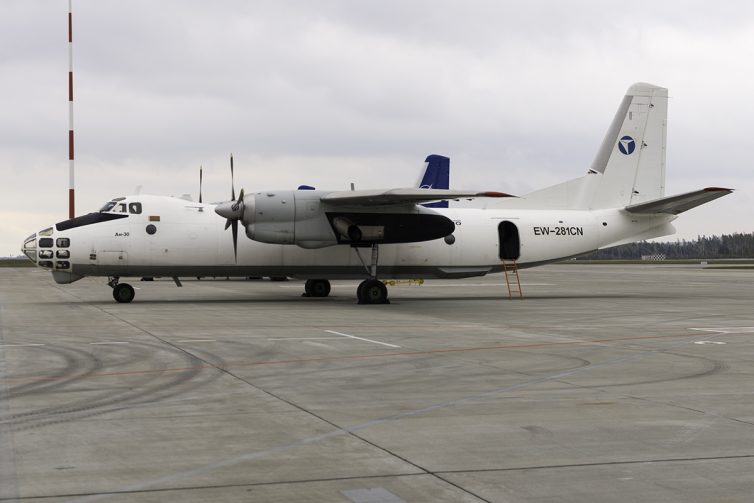
This An-30 belongs to Aviakompany Grodno. They’re based in Grodno. Creative name… – Photo: Bernie Leighton | AirlineReporter
The Antonov An-24 is one versatile aircraft. That aircraft lead to the An-26, which then lead to the An-32. Heck, the Saudis gave the Ukrainian government money to design the An-132. Reasons were given for the latter, I am sure.
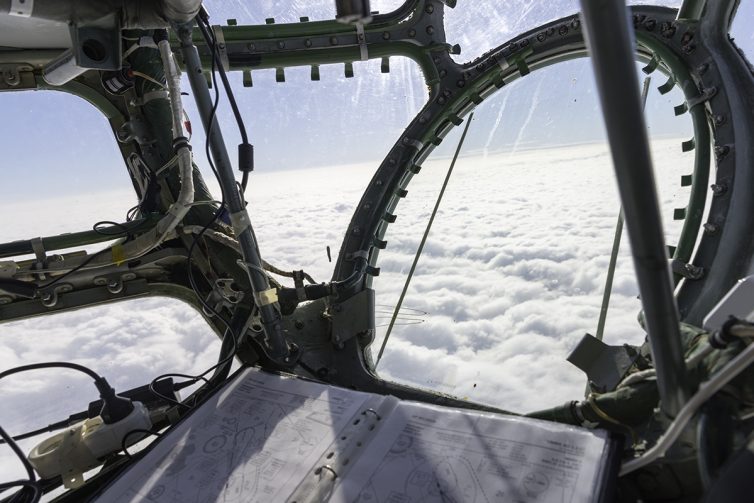
There’s the view! – Photo: Bernie Leighton | AirlineReporter
All of those just haul people or cargo, though. BORING! What if you needed to observe something? What if you needed airborne survey? What if you wanted to do better cartography? Enter the rarest An-24 variant: the An-30 — only 123 were ever made.
It’s distinct from all the other An-24s in the world because, well… just look at it. The glazed nose for the navigator really sticks out and illustrates the fact that this is a rare breed of Antonov. It does more than look cool, though.
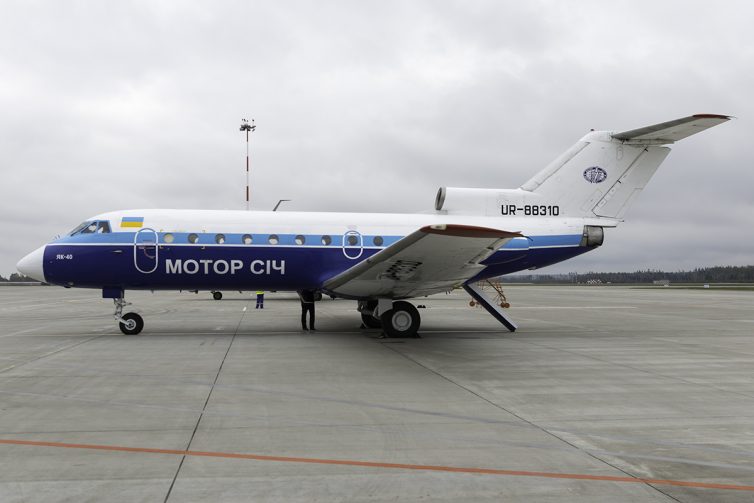
This lovely Yak-40 on the ramp of UMMS belongs to Motor Sich – Photo: Bernie Leighton | AirlineReporter
Since 1907, it has been home to various instances of the same engine manufacturing concern over varying countries and names. Today, Zaporozhye is the headquarters of Motor Sich; the largest producer of Soviet-era and Russian aerospace turbine engines by quantity. While they are best known for the Ivechenko-Progress D36/4D36 series engines, they also manufacture the famed D-18 engine attached to the ANs 124 and 225. To top that off, they also manufacture the most important gas turbines of all: the kind you put in helicopters. That’s awesome. But you probably don’t need to know much more about that part of Motor Sich.
Of course, this is the former Soviet Union. For reasons hard to explain, they founded a corporate shuttle service in 1984. After the collapse of the Soviet Union, Motor Sich did not die, in fact it expanded its scope to general passenger operations.
This is Motor Sich Airlines.
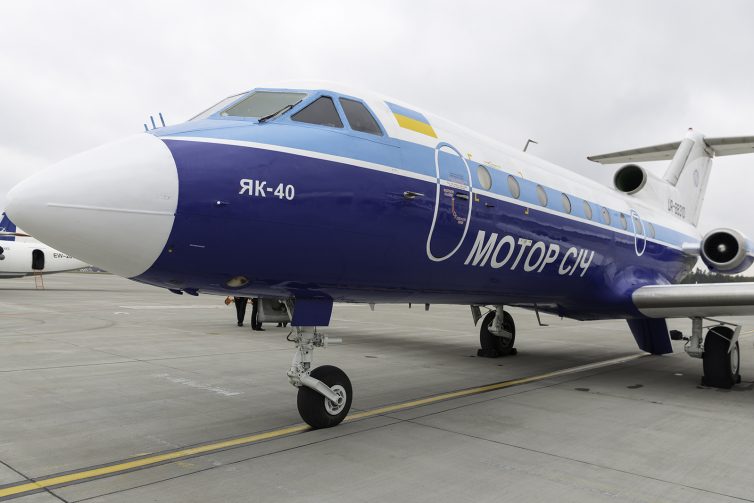
Now that’s a profile! Photo: Bernie Leighton | AirlineReporter
They have Yak-40s. If you have a Yak-40, I will fly you.
My contacts within the Belarusian travel scene had arranged with Motor Sich to swap one of their An-24s out of their flights from Zaporozhye to Minsk in exchange for a Yak-40. Then they were to have it stick around for an hour or two for a bunch of us Soviet metal hungry tragics to do a basic instrument training flight on as passengers.
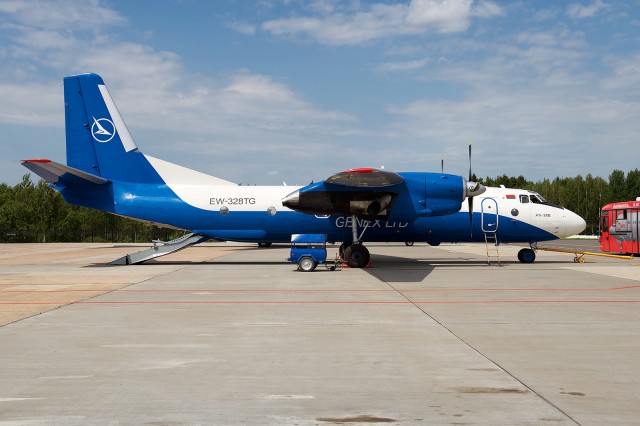
EW-328TG, an AN-26B side-on. Photo – Bernie Leighton | AirlineReporter
Antonov’s AN-26 is not a passenger plane, not even close. The AN-26 stems from the passenger AN-24– except it’s an AN-24 with a retractable cargo door. Same Ivchenko-Progress AI-24VT engines, same Kuznetzov APU. Just a door and some bubble windows in the flight deck separate it from its more, passenger-appropriate, forerunner.
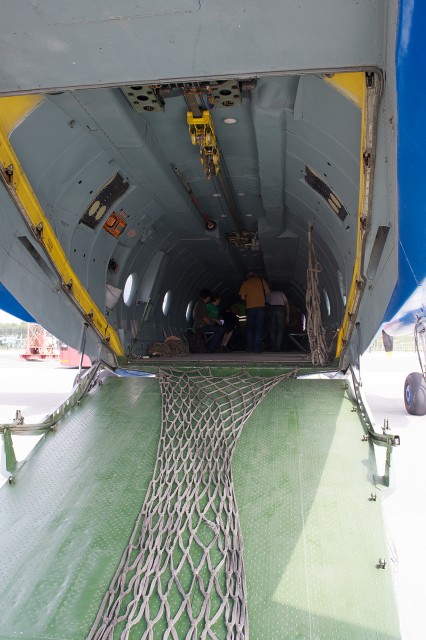
Boarding an AN-26B. Photo – Bernie Leighton | AirlineReporter
The cargo ramp is actually relatively slippery, so one must pay close attention and walk up the net. That photo also illustrates the fact that the AN-26 is equipped with an overhead crane to make loading easier.
The seats are hard — hard and linear. There are four windows in reasonable shape, but they barely make the cabin lighter than a dim alley, but it’s the thought that counts. All this didn’t take away from the fact that I had the opportunity to fly in this Ukrainian-built aircraft.
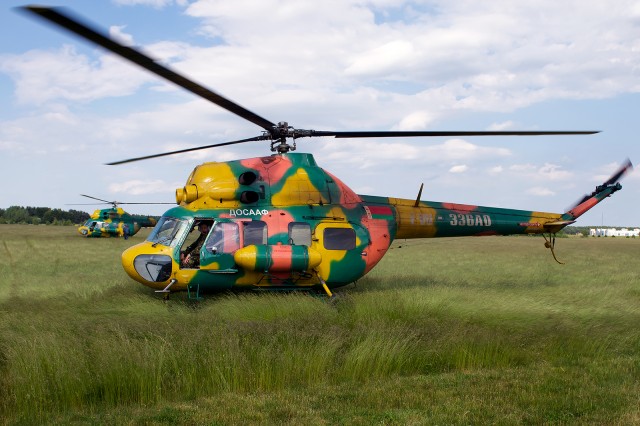
So loud, I am surprised you can’t hear them through the photo. Two DOSAAF of Belarus MI-2 await boarding Photo: Bernie Leighton | AirlineReporter
Russia was built for the helicopter, or so said Mikhail Mil. He would know, even though his cohort Igor Sikorsky beat him to the sky. Russia was also built for the Very Short Take Off and Landing (VSTOL) Biplane. There are many short, rough runways throughout Russia, previously and today, that require special aircraft.
The reason for this combined article about my afternoon with the Belorussian DOSAAF (There’s no translation, but DOSAAF is like if American ROTC units kept old equipment around to show off to civilians) is because the Antonov AN-2 and the Mil MI-2 are probably the two most instrumental and historical aircraft of post-Great Patriotic War aviation.
With scores (over 18,000) of AN-2s built and almost 6000 MI-2s- they were the ubiquitous work horses of the Soviet Union. Even stars of stage and screen!






